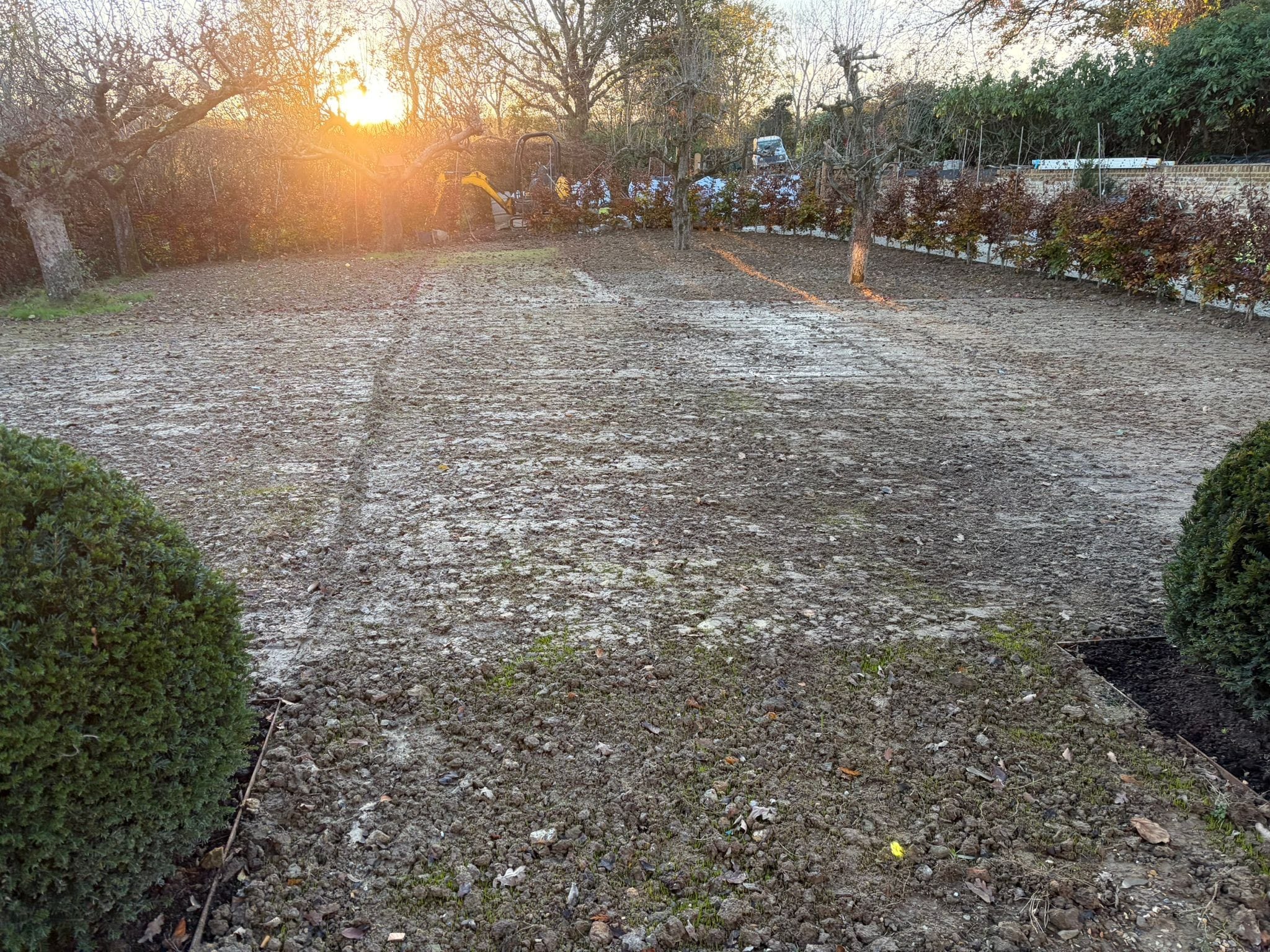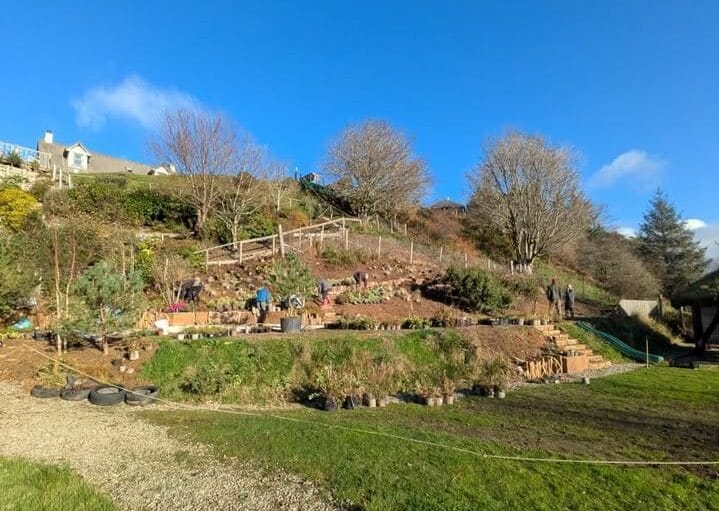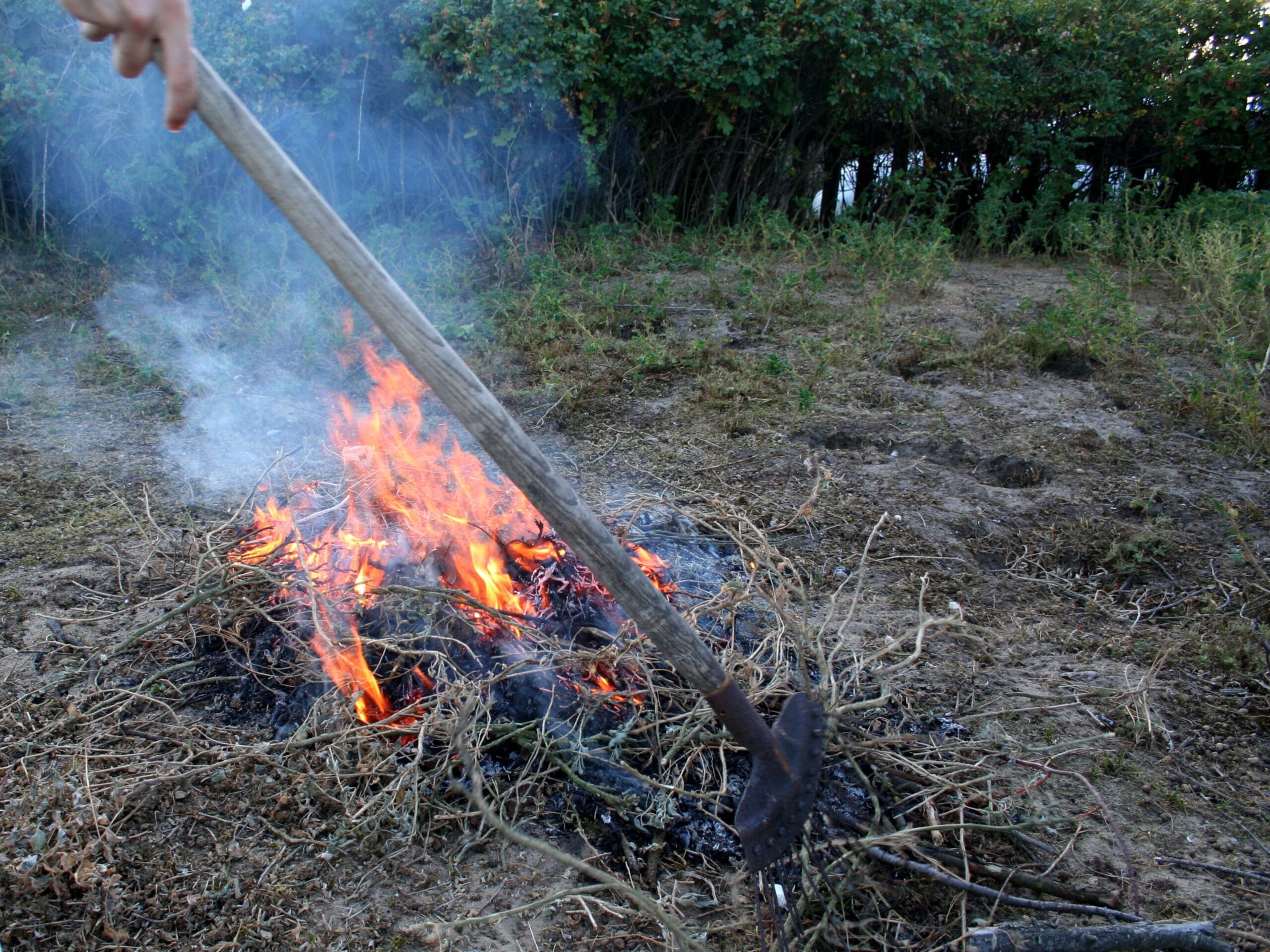Transform your garden this winter and be ready for a thriving 2026 season. At Frogheath…
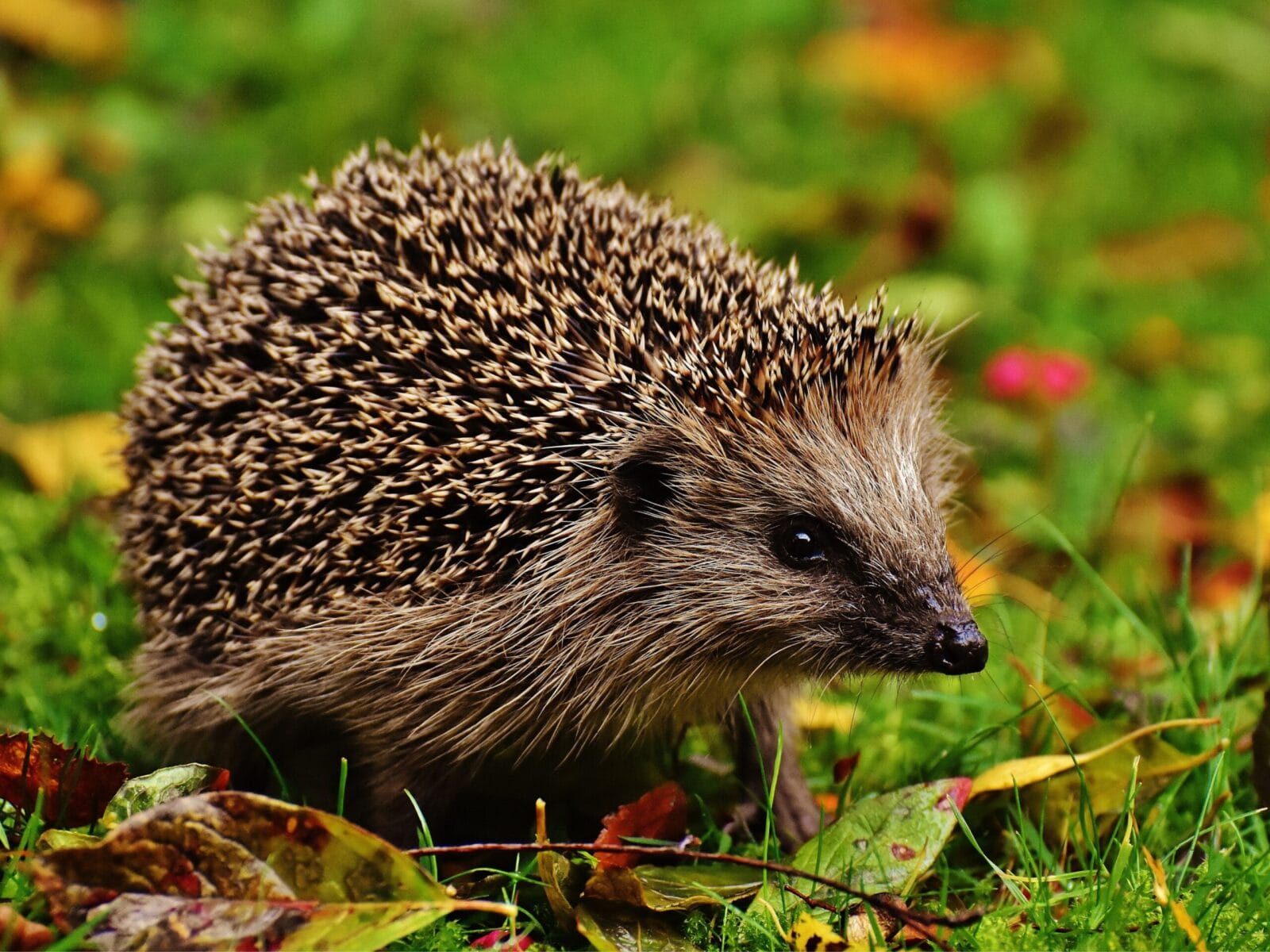
7 Tips To Create A Wildlife-Friendly Garden for Autumn and Winter
Creating a wildlife-friendly garden for autumn and winter is vital. As the days grow shorter, many people assume that gardens go into hibernation. While plant growth slows down, this time of year is vital for local wildlife. Birds, hedgehogs, pollinators, and beneficial insects all need food, shelter, and resting places to see them through the colder months. With a few thoughtful adjustments, you can transform your garden into a haven for wildlife right through autumn and winter.
Here are 7 tips to create a wildlife-friendly garden for autumn and winter. These practical ideas, designed for gardens in Sussex and Kent, will help you create a thriving, wildlife-friendly space.
1. Leave Seed Heads and Berries for Food
Instead of cutting back every perennial and shrub, leave some seed heads standing. Plants like echinacea, sedum, rudbeckia, and teasels provide natural bird feeders, while berry-bearing shrubs such as hawthorn, holly, and cotoneaster are lifelines for thrushes, blackbirds, and robins. This will also save on costs of bird seed and suet balls, which you may still need in the coldest of winter months once your berries and seeds have been eaten. (See point 5 for more on this.)
Tip: If you have fruit trees, consider leaving any windfalls for ground-feeding wildlife.
2. Provide Shelter and Nesting Spots
Wildlife needs safe places to rest and overwinter. Piles of logs, leaves, and twigs make excellent habitats for hedgehogs, insects, and amphibians. Even a small pile in a quiet corner of your garden can make a big difference.
The RSPB has some good tips on how to make a wildlife habitat here.
We think a log pile is a great addition for a wildlife-friendly garden for autumn and winter, which the whole family can get behind in creating. However, if you’d prefer a more structured look, consider adding a hedgehog house, insect hotel, or bird boxes in sheltered spots. These can be homemade or purchased from garden centres.
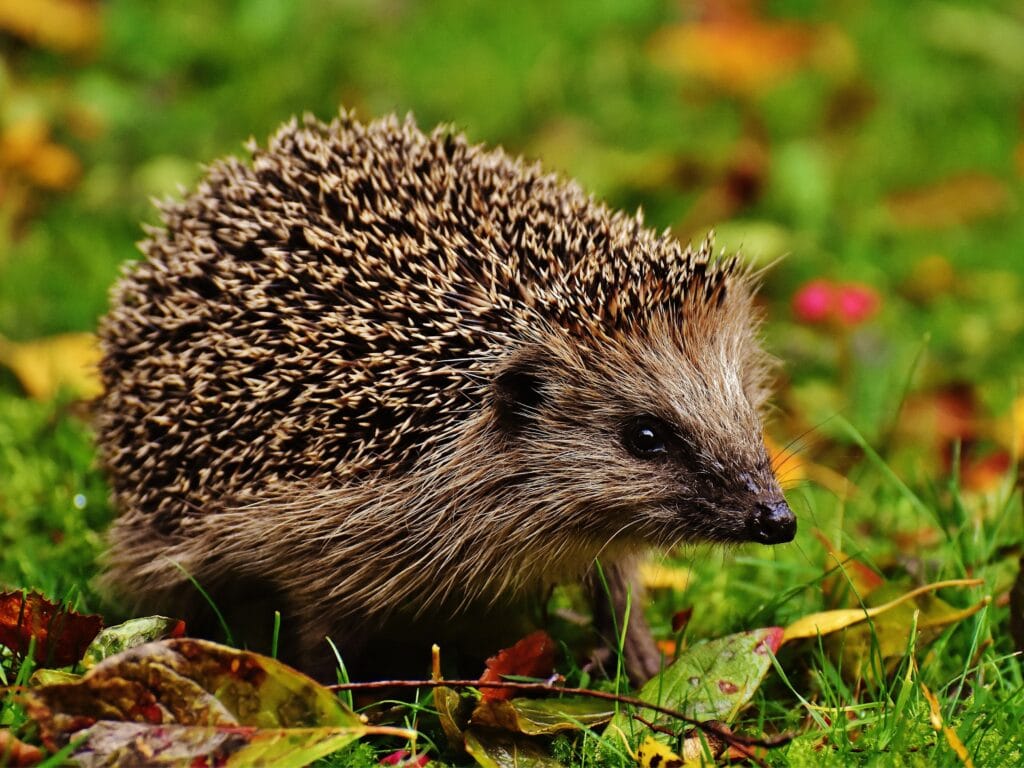
3. Plant for Late Nectar
Pollinators are still active well into autumn, and they rely on late-flowering plants. In Sussex and Kent, plants such as ivy, sedum, and Michaelmas daisies are excellent sources of nectar for bees and butterflies.
Autumn-flowering crocus and cyclamen are also valuable, providing both beauty and food for visiting pollinators.
4. Create an Autumn and Winter-Friendly Pond
A pond is one of the best features you can add to a wildlife-friendly garden for autumn and winter. The pond needs deep sections to prevent complete freezing, oxygenating plants like Hornwort to maintain water quality, and shallow areas with exit ramps for amphibians and other creatures to escape the water. Incorporating logs, rocks, and varied native plants provides crucial shelter for hibernating insects, while leaving vegetation around the edges offers additional overwintering sites. Ulster Wildlife has more tips on maintaining a wildlife friendly pond across the autumn and winter.
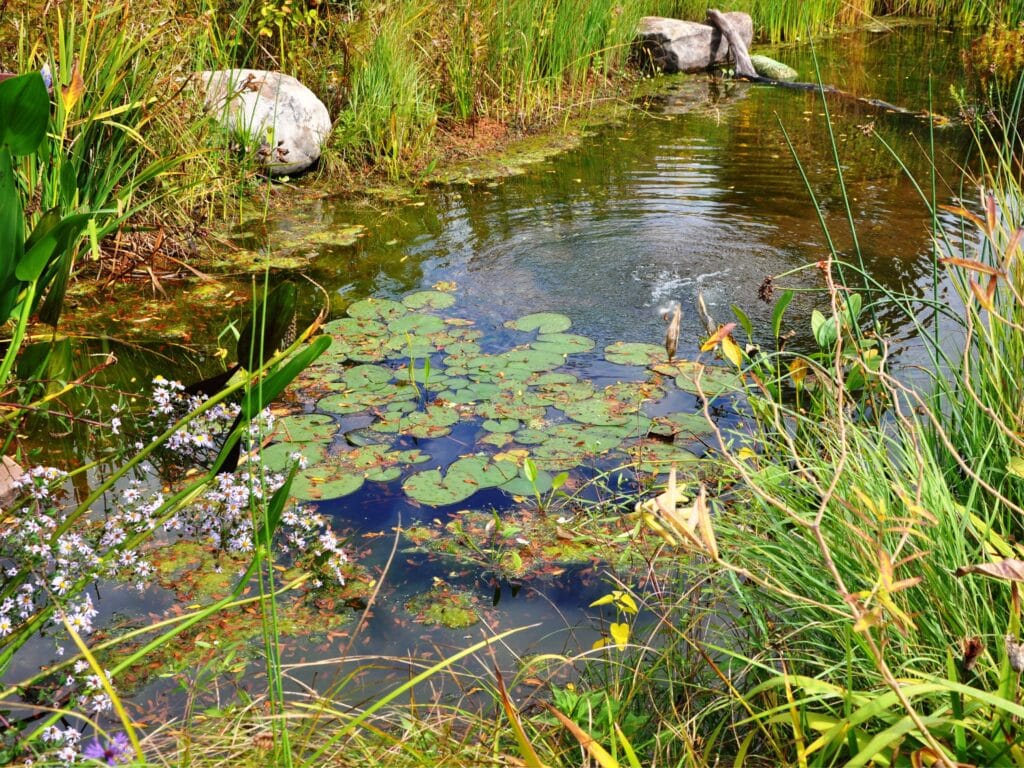
5. Feed the Birds Responsibly
Birds need extra calories during colder months. Once the seeds and berry supplies have been depleted, offer a mix of sunflower hearts, suet blocks, and peanuts to support a wide range of species. Remember to keep feeders clean to prevent disease.
Planting native hedges such as hawthorn or blackthorn can also provide natural shelter and food sources for birds throughout the season.
6. Rethink “Tidying Up”
It’s tempting to rake, prune, and clear everything away in autumn, but leaving some areas untidy is one of the best ways to help wildlife. Fallen leaves create habitat for insects and act as a natural mulch for your borders. Dead stems and hollow canes provide nesting sites for solitary bees.
A slightly wilder and unkempt corner in your Sussex or Kent garden can become crucial in creating a wildlife-friendly garden for autumn and winter.
7. Plan Ahead for Spring Wildlife
Autumn is the perfect time to plant spring bulbs such as snowdrops, crocuses, and daffodils. These will be among the first nectar sources for pollinators waking up after winter. Read our blog on Autumn Bulb Planting to find out more.
By making small, thoughtful changes, you can easily create a wildlife-friendly garden for autumn and winter. In Sussex and Kent, where countryside habitats are often under pressure, even a modest garden can play an important role in supporting local biodiversity.
Not only will your efforts help wildlife, but you’ll also enjoy a garden full of birdsong, movement, and life through the colder months.
If you need help in planning a wildlife-friendly garden design and build, please do not hesitate to get in touch.

